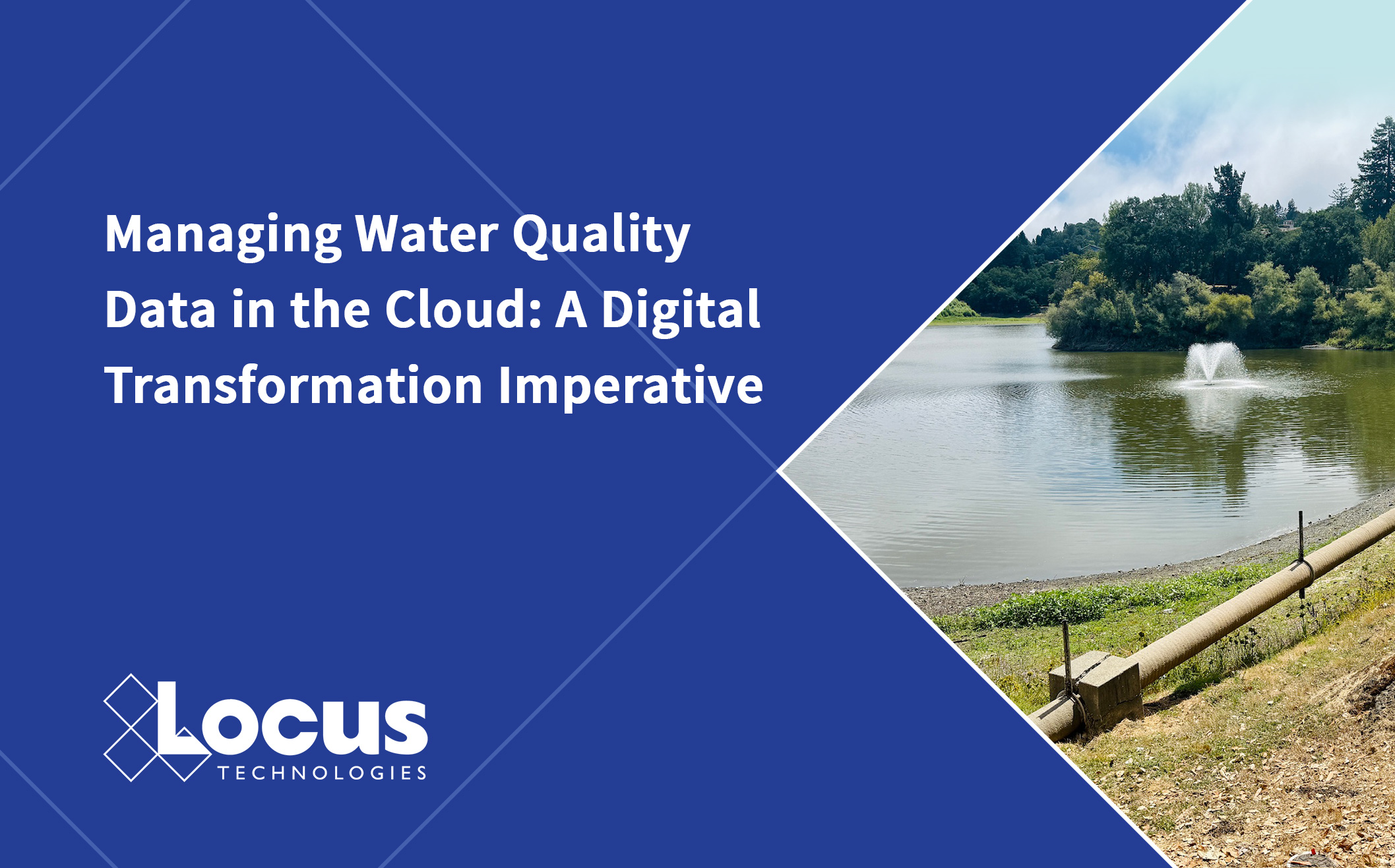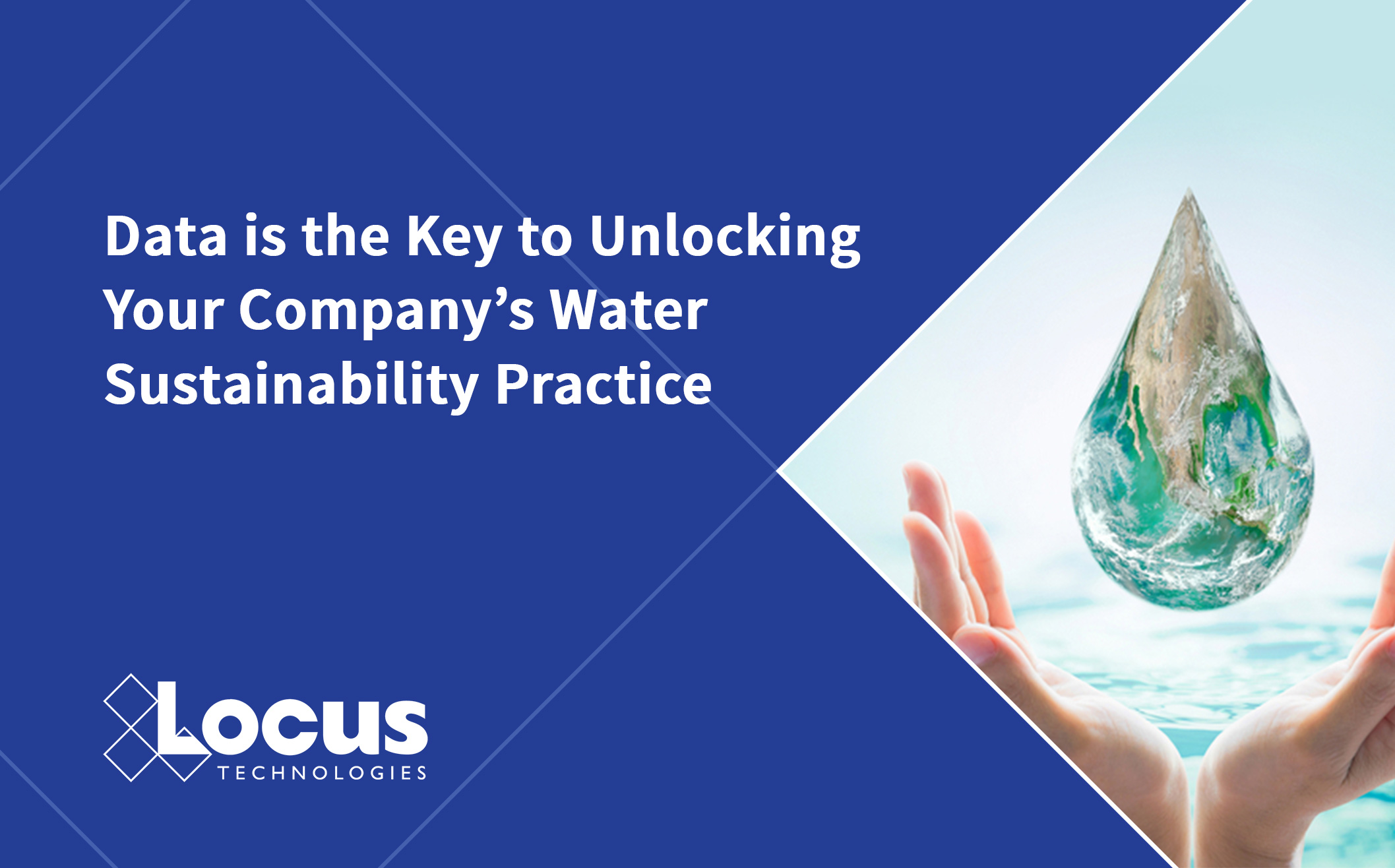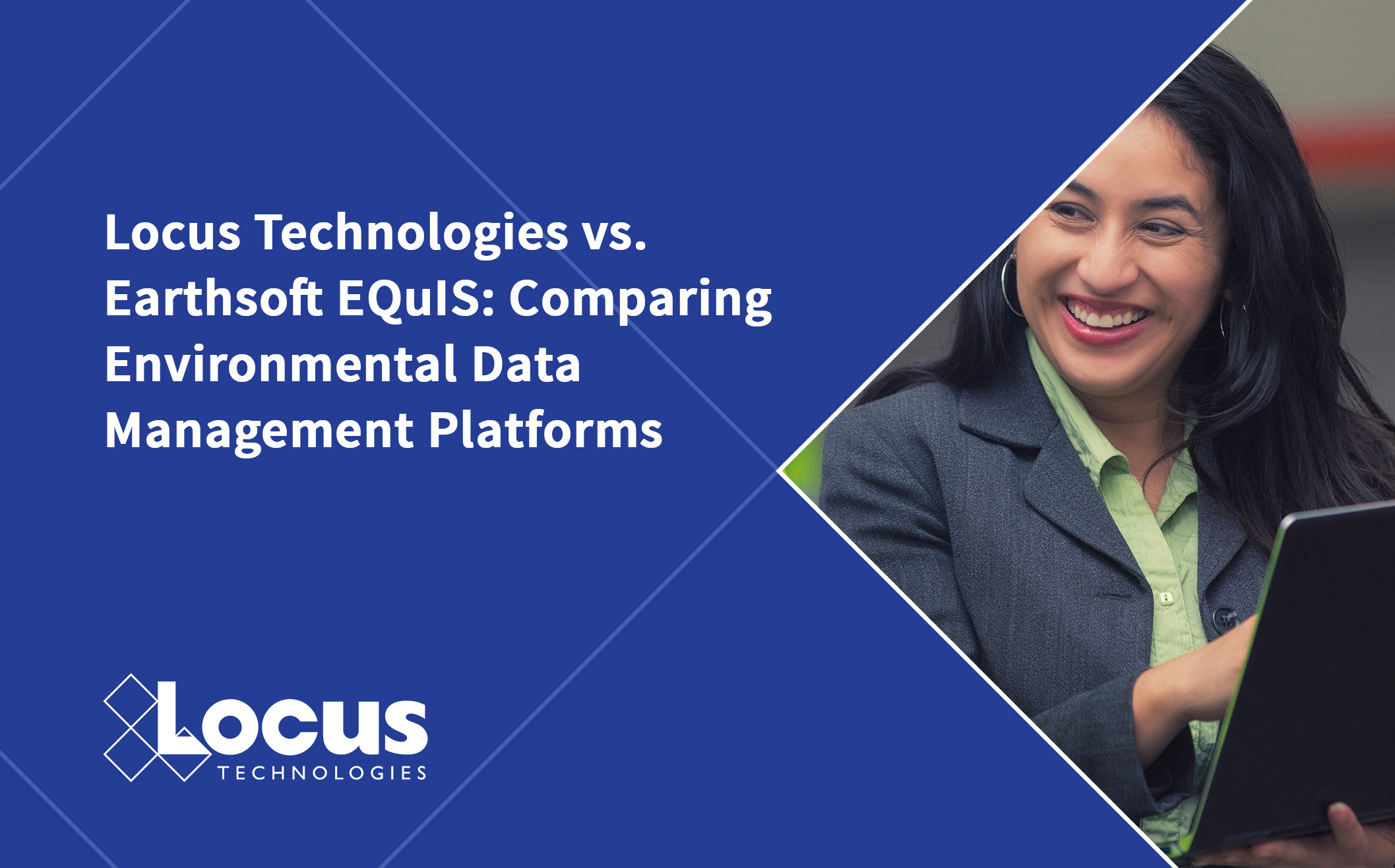Managing Water Quality Data in the Cloud: A Digital Transformation Imperative
By Staff Writer

Reading Time: 4 minutes
When Neno Duplan founded Locus Technologies in the late 1990s, “the cloud” was a concept few could define. Today, the company he leads is a recognized pioneer in cloud-based water data management and compliance, helping utilities and corporations transform how they collect, validate, comply, and act on environmental information. This article profiles lessons learned from three decades at the intersection of technology, environmental compliance, and water stewardship.
From Spreadsheets to the Cloud
Many of the 50,000+ water utilities across the United States still rely on spreadsheets to manage their water quality and metrics data. According to Duplan, that’s no longer sustainable. “The amount of data is multiplying every year,” he says. “It’s becoming almost impossible to meet reporting requirements while operating on spreadsheets.”
The complexity of water data, ranging from field samples and laboratory analyses to operational and regulatory records, demands an integrated, cloud-based system. Digital transformation is not just about modernization; it’s a matter of compliance, efficiency, and resilience. “The pandemic proved that organizations without cloud access were at a disadvantage,” Duplan observed. “Those already in the cloud never lost visibility into their data.”
Why Cloud Data Management Matters
Cloud infrastructure removes dependence on local servers or physical storage that can be damaged, inaccessible, or lost in a disaster. Duplan recalls stark examples from major industrial incidents: “When the Deepwater Horizon platform sank, BP still had operational data stored in the cloud. That allowed investigators to understand what happened. At Fukushima, by contrast, much of the plant’s critical data was destroyed with the facility. If your data lives only on-premises, it dies when the infrastructure fails.”
For water utilities, cloud data management ensures secure, continuous access to essential information, regardless of location. It allows teams to collaborate remotely, support regulatory reporting in real time, and unify disparate datasets, from treatment plants, labs, and IoT devices, into a single source of truth.
The Challenge of Water Quality Data
Water quality management is uniquely complex. Each lab result is not just a number; it’s the outcome of a rigorous process involving chain-of-custody documentation, sample metadata, instrument calibration records, and analytical method validation. Duplan notes that for every single chemical concentration value in Locus software, there are 100 to 200 supporting data points that verify its accuracy. “That’s what stands up in court if you’re ever challenged,” he said. “It’s not just the result. It’s the data behind the result.”
Managing that volume of information in spreadsheets or legacy systems makes it difficult to track quality, spot anomalies, or demonstrate compliance. Cloud-based solutions automate these processes, ensure data integrity, and allow utilities to focus on insights rather than data wrangling.

Breaking Down Data Silos
Water operations often rely on multiple unconnected systems: one for treatment plant monitoring, another for laboratory results, and another for field sampling. This fragmentation limits visibility and slows response times. “You can’t act on water quality data until you integrate it,” Duplan emphasizes. “Interoperability between data sources is key.”
The benefits extend across the organization. A unified cloud platform allows cross-functional teams (operations, compliance, engineering, and management) to collaborate in real time. When a lab result indicates an exceedance or “outlier” above regulatory thresholds, for example, plant operators can be immediately notified and adjust treatment protocols before the issue escalates.
Duplan compares this to healthcare: “Your doctor wouldn’t prescribe a treatment without reviewing your lab results. Water utilities should operate the same way –integrating laboratory data with operational decision-making.”
Cloud-Based Applications for Comprehensive Water Management
Locus offers a comprehensive suite of cloud software applications designed to streamline water management and ensure regulatory compliance across drinking water, wastewater, stormwater systems, or any type of industrial water. Our Drinking Water Quality software helps utilities track, analyze, and report on water quality parameters efficiently, while Water Metrics software consolidates data from meters, sensors, and field reports to monitor supply, flow, pressure, volume, and system balance. For protecting the integrity of water systems, Locus Backflow Prevention and Cross-Connection Control software centralizes inspections, testing, and compliance for backflow prevention devices. Additionally, the platform supports Industrial Pretreatment and Wastewater Tracking, as well as Stormwater Inspection workflows, enabling utilities and corporations to automate processes, integrate laboratory and field data, and maintain comprehensive, verifiable records—all from a single, secure cloud platform.
A Stepwise Approach to Digital Transformation
For utilities still operating on spreadsheets, the prospect of digital transformation can seem daunting. Duplan recommends a pragmatic, staged approach. “Start now with a cloud SaaS platform for all new data,” he advises. “Once you’re comfortable, bring in historical data as needed. Don’t wait until you’ve cleaned everything up; that’s a mountain that stops most projects before they start.”
This incremental method also helps identify and correct legacy errors. “When companies migrate old data into modern systems equipped with data validation on arrival, we often discover inconsistencies,” Duplan says. “It’s better to validate new data first and then gradually reconcile the past.”
Interestingly, utilities that have delayed modernization now have an advantage: they can skip outdated on-premises database systems entirely and leapfrog directly into the cloud—just as some countries jumped straight from having no phone lines to using mobile networks.
Preparing for Emerging Contaminants
The emergence of PFAS regulations underscores why data readiness matters. Even before federal standards, many states (particularly on the coasts) established their own PFAS limits. “Smart utilities are already collecting PFAS data, so they’re ready for national standards,” Duplan says. “You can never go wrong collecting more data, as long as you do it correctly, keep it in intelligent databases, and turn it into information.”
Some utilities hesitate, fearing that identifying PFAS could expose them to liability. Duplan argues the opposite. “The best defense is verifiable, validated data. If you can prove your lab methods, calibrations, and sample integrity, you’re protected. Without that documentation, you’re vulnerable.”
The Economics of Cloud Data Management
One of the most overlooked benefits of digital transformation is cost efficiency. Laboratory sampling and analysis are expensive—typically $100 to $200 per sample—yet managing those results in the cloud costs just pennies. The greater risk lies in data loss or errors that require resampling. “If something goes wrong and you have to repeat a sampling round, you can easily spend $1,000 per sample,” Duplan says. “Cloud data management minimizes those mistakes for a fraction of the cost.” Just having data validation built into cloud software pays off as one can catch potentially costly sampling or lab errors upon data arrival, not when reporting.
Looking Ahead: IoT, AI, and Blockchain
Duplan believes we are still in the early stages of digital transformation in water. The next decade will bring deeper integration of Internet of Things (IoT) sensors, advanced analytics, AI, and blockchain technology. “Anything that can be measured remotely should be,” he says. “IoT reduces manual sampling and improves traceability.”
Blockchain, although still emerging, could further strengthen data integrity. Each sample, instrument, and location could become a node in a blockchain ledger — automatically recording provenance, calibration, and transport conditions. “That eliminates repetitive data entry and creates a tamper-proof record from collection to analysis and finally reporting,” Duplan explained. Ultimately, the reporting element would totally disappear as both customer and regulator would be subscribed to the real time blockchain ledger with full transparency to the whole process. As a result, data quality would improve while reporting costs would be drastically reduced.
Water, Energy, and Climate: The Connected Future
Water quality and management cannot be separated from the larger resource challenge. As Duplan points out, only 0.007% of the world’s water is accessible for human and animal use. “Every gallon of treated water involves chemicals and energy,” he says. “There’s a tight nexus between water, energy, and climate. Managing water efficiently means managing environmental impact.” While global discussions focus on carbon, the ultimate battle against climate change centers on water. Carbon emissions are merely a consequence of human and natural processes, but water governs every aspect of life—climate regulation, energy production, agriculture, and human survival. Without sustainable water management, carbon reduction alone cannot secure our future.
The Call to Action
Duplan’s message is clear: cloud data management via SaaS is not optional; it’s essential for resilience, compliance, and sustainability. “Digital transformation benefits everyone in the chain of delivering clean water to the tap,” he concludes. “We see water crises happening almost monthly across the U.S. and the world lead in pipes, treatment failures, contamination events. Yet it’s nearly impossible to find comprehensive data on where these outliers occur. That should not be the case in the 21st century.”
The technology to solve this problem exists. What’s needed now is the will to adopt it—and the vision to see that managing water quality data in the cloud isn’t just about modernization. It’s about safeguarding the future of water itself.
Locus is the only self-funded water, air, soil, biological, energy, and waste EHS software company that is still owned and managed by its founder. The brightest minds in environmental science, embodied carbon, CO2 emissions, refrigerants, and PFAS hang their hats at Locus, and they’ve helped us to become a market leader in EHS software. Every client-facing employee at Locus has an advanced degree in science or professional EHS experience, and they incubate new ideas every day – such as how machine learning, AI, blockchain, and the Internet of Things will up the ante for EHS software, ESG, and sustainability.



